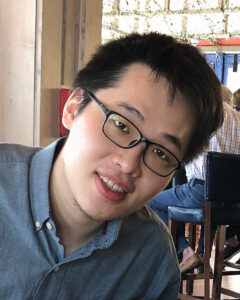 PI Researcher: Wayne Knox
PI Researcher: Wayne Knox
Development of a new Intraoperative Instrument Using AR/VR technology: We propose to continue and expand our recently started research project on using multispectral polarization technology for the detection of nerves and to learn how to incorporate it into a VR/AR/MR technology as a new surgical aid. This device could help to avoid accidental nerve cuts during routine surgery. The project will develop a research prototype for use in live human surgical clinical trials. We will test different modes of image processing such as artificial intelligence and methods of data science to determine the best modes of operation according to the surgeon’s requirements.



 PI Researcher:
PI Researcher: 

 PI Researchers:
PI Researchers:
 PI Researcher:
PI Researcher: 
 PI Researcher:
PI Researcher: 
 PI Researcher:
PI Researcher:  IDEX Health and Science – Machine Learning for the Enhanced Design of Multilayer Optical Filters
IDEX Health and Science – Machine Learning for the Enhanced Design of Multilayer Optical Filters PI Researcher:
PI Researcher: 
 PI Researcher:
PI Researcher:  PI Researcher:
PI Researcher: 
 PI Researcher:
PI Researcher: 
 PI Researcher:
PI Researcher: 
 PI Researcher:
PI Researcher: 
 PI Researcher:
PI Researcher: Parverio – Second Generation Computer Vision Tools for the Study of Luekocyte Trafficking Across Vascular Barriers In Vitro
Parverio – Second Generation Computer Vision Tools for the Study of Luekocyte Trafficking Across Vascular Barriers In Vitro PI Researcher:
PI Researcher: Advanced Atomization Technologies – Establishing a Multi-modal Data Fusion Framework for Acquiring Tacit Knowledge from Machinists
Advanced Atomization Technologies – Establishing a Multi-modal Data Fusion Framework for Acquiring Tacit Knowledge from Machinists PI Researcher:
PI Researcher: